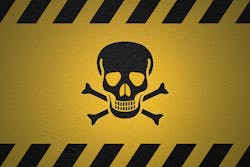Well into the 1980s, mechanics routinely cleaned their hands with “safety solvent” (trichloroethane 1,1,1), so named because it isn’t flammable as is gasoline (another favorite hand wash back then). But it isn’t safe, it’s highly carcinogenic.
The human body’s capacity to remove toxins is overloaded because of the thousands of toxins in our air, food, and water. We can reduce some of these by, for example, using less toxic cleaning solutions at home. For example, use baking soda and vinegar instead of something in a spray can.
But the main place for electricians to focus on the toxin problem is in the workplace. You can’t, for example, use baking soda or vinegar to clean breaker contacts; you’re going to have to use something that is less friendly to your body.
The two key strategies are limiting exposure and wearing personal protective equipment (PPE). For that contact spray, the MDS might recommend nitrile gloves and a charcoal respirator.
About the Author

Mark Lamendola
Mark is an expert in maintenance management, having racked up an impressive track record during his time working in the field. He also has extensive knowledge of, and practical expertise with, the National Electrical Code (NEC). Through his consulting business, he provides articles and training materials on electrical topics, specializing in making difficult subjects easy to understand and focusing on the practical aspects of electrical work.
Prior to starting his own business, Mark served as the Technical Editor on EC&M for six years, worked three years in nuclear maintenance, six years as a contract project engineer/project manager, three years as a systems engineer, and three years in plant maintenance management.
Mark earned an AAS degree from Rock Valley College, a BSEET from Columbia Pacific University, and an MBA from Lake Erie College. He’s also completed several related certifications over the years and even was formerly licensed as a Master Electrician. He is a Senior Member of the IEEE and past Chairman of the Kansas City Chapters of both the IEEE and the IEEE Computer Society. Mark also served as the program director for, a board member of, and webmaster of, the Midwest Chapter of the 7x24 Exchange. He has also held memberships with the following organizations: NETA, NFPA, International Association of Webmasters, and Institute of Certified Professional Managers.
